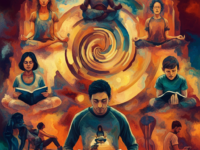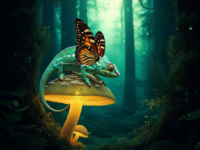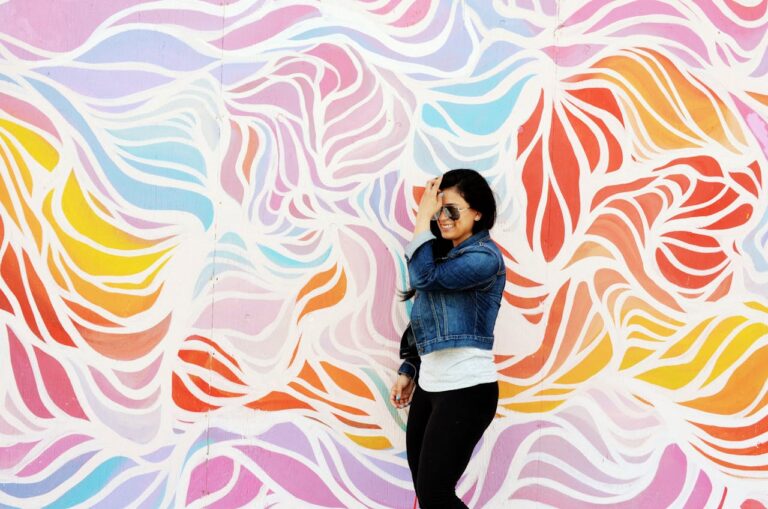Ever walked into a room and felt instantly calm, or spotted an ad that made you stop scrolling? A lot of that has to do with colour. Whether it’s a warm red that grabs your attention or a soothing blue that feels like a deep breath, colours quietly impact us in ways we often don’t realize. But how does this work, and how can we use it to our advantage?
This blog dives deep into the fascinating world of colour psychology—how colours affect our emotions, the messages they convey in design and marketing, and how cultural context plays a role. If you’re a designer, a psychology enthusiast, or someone looking to level up their branding game, you’ll walk away with insights (and maybe a fresh perspective on your favourite colour).
Understanding Color Psychology
What Is Color Psychology?
Colour psychology studies how colours influence human behaviour, emotions, and decisions. It’s rooted in both science and art—combining physiological effects (like how red can elevate your heart rate) and cultural associations (like green symbolizing luck in Western cultures).
Simply put, colours are more than just visual—they’re emotional. Here’s where this becomes important for anyone working in design, marketing, or visual storytelling.
Primary and Secondary Colors
Each colour has its personality. Here’s a quick breakdown of some common associations:
- Red (Primary): Passion, energy, urgency
- Blue (Primary): Calm, trust, reliability
- Yellow (Primary): Happiness, warmth, optimism
- Green (Secondary): Balance, nature, growth
- Purple (Secondary): Creativity, luxury, wisdom
- Orange (Secondary): Excitement, friendliness, enthusiasm
These meanings aren’t universal, but they give us a starting point when choosing colours for specific purposes.
“Color is a power that directly influences the soul.” – Wassily Kandinsky, Artist and Theorist
The Role of Colors in Design
How Industries Use Color
Designers and marketers understand the subtle psychology of colour better than most. They know how to pick hues based on the emotions they want to evoke or the reactions they want to inspire. Here’s how some industries put colour to work:
- Branding: Ever wonder why so many fast food chains use red and yellow? Red is stimulating (even hunger-inducing), while yellow adds a playful, positive vibe. Look at McDonald’s, Burger King, or KFC—it’s science!
- Web Design: Blue is often used by tech companies (Facebook, LinkedIn, Twitter) because it conveys trust and professionalism. E-commerce sites might lean on green for “buy now” buttons due to their association with action.
- Packaging: How a product “feels” on the shelf owes a lot to its packaging colour. Luxury brands gravitate toward blacks and gold for elegance, while eco-friendly products stick to greens and browns to mirror sustainability.
Case Studies
- Coca-Cola: Its iconic red logo radiates excitement, passion, and energy. It’s instantly recognizable and hard to forget.
- Spotify: The bright green speaks to energy and creativity—perfect for a platform encouraging the exploration of music.
- Apple: The minimalist black-and-white design exudes sophistication and a no-nonsense appeal.
“Understanding the psychology of colour is crucial in design and branding. It’s about creating an experience, not just an image.” – Derek Halpern, Founder of Social Triggers
Psychological Effects of Popular Colors
Red
- Impact: Stimulates energy, urgency, and passion.
- When to use: Sales promotions, warning symbols, or creating a sense of urgency (e.g., “limited stock”).
Blue
- Impact: Builds trust, reduces stress, and conveys dependability.
- When to use: Banks, healthcare, or professional settings.
Green
- Impact: Associated with growth, nature, and healing.
- When to use: Eco-friendly campaigns, interior spaces, or wellness brands.
Yellow
- Impact: Invokes cheerfulness, creativity, and spontaneity.
- When to use: Children’s toy packaging, advertising happy or fun-oriented events.
“The psychology of colour directly impacts human behaviour. It is a silent language that speaks volumes.” – Leatrice Eiseman, Executive Director of the Pantone Color Institute
Cultural and Contextual Considerations
Colours and Cultures
Not all colours mean the same everywhere. For example:
- White: Purity in Western cultures but mourning in East Asia.
- Red: Celebration in China, danger in the US.
- Purple: Royalty in Europe, mourning in Thailand.
Understanding your audience’s culture is non-negotiable. “The wrong” colour choice might alienate or confuse your target market. Karen Haller, colour psychology specialist, emphasizes, “What’s appealing in one culture may be off-putting in another.”
Context Matters
Beyond culture, personal context—past experiences, emotions, or memories tied to colours—also plays a role. A soft pastel pink might soothe one person because it reminds them of childhood, but to another, it might feel cloying or immature.
Practical Applications in Design
Choosing Color Schemes
Start by considering the project goals:
- Building trust? Lean into blues.
- Seeking attention? Use bold reds or yellows.
- Communicating sustainability? Greens and earth tones work best.
Tools for Color Selection
Need a little help? These resources are a designer’s best friends:
- Adobe Color: For creating custom palettes.
- Coolors: To generate quick, cohesive colour schemes.
- Canva: Great for beginners looking for pre-designed combos.
Future Trends in Color Usage
As technology and society evolve, so do colour trends. Here’s what we might see more of:
- Digital-First Palettes: Colors optimized for screens, balancing vibrancy with easy readability.
- Greens & Earth Tones: Reflecting the increasing focus on sustainability.
- Neutrals with Pops: Combos like beige with neon pink tying minimalism to excitement.
Stay tuned—AI tools might soon personalize colour palettes for individual users, offering a whole new layer of emotional design.
Making Color Work for You
From branding to product design to interior spaces, understanding the psychology of colour means creating more intentional and impactful designs. The potential to improve how we communicate, sell, and engage is immense.
Have you thought about how colours have influenced your own emotions or choices? Drop your thoughts in the comments, and start noticing how this silent language speaks to you in life.
Want to dig deeper into colour for your next project? Take the first step with Adobe Color, or experiment with Coolors to create your palette.
“Colors are not just symbolic, they carry inherent meanings that can be leveraged to influence consumer decisions.” – Karen Haller.





















0 Comments